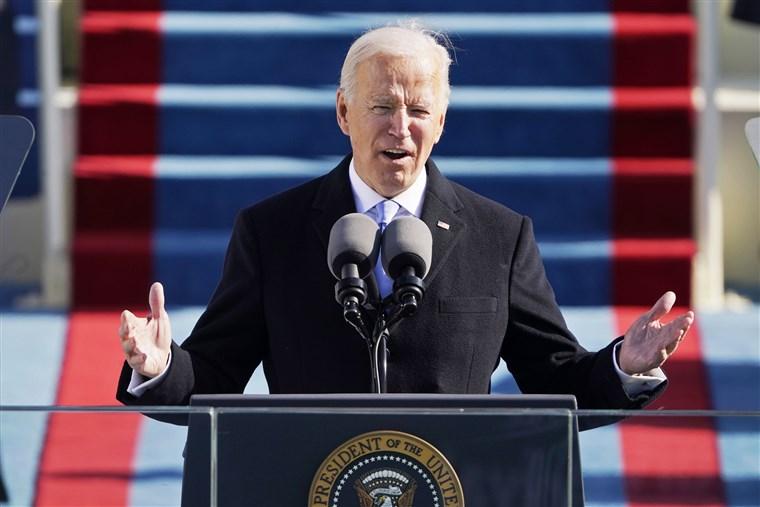22 people were executed in the United States in 2019, according to the Death Penalty Information Center. Capital punishment is legal in 28 U.S. states, and since the reinstatement of the death penalty in 1976, 1,529 people have been executed.
Let me be very clear: I do not condone any of the violent crimes that inmates are placed on death row for. I have no sympathy for their circumstances and I think the majority of them are horrible people that deserve to rot in prison. That being said, I do not support the death penalty, as it is an inhumane punishment that no one, regardless of what crime they committed, deserves.
The U.S. Constitution protects citizens from “cruel and unusual punishment”, and while it does not take an explicit stance on the death penalty, modern executions could be considered cruel for a couple of reasons. Firstly, most executions have witnesses. Inmates are executed in front of law enforcement, their victims’ families, and anyone they chose to see them in their final moments. While that is not nearly as humiliating and inhumane as a standard public execution, it still forces an inmate to meet their end without dignity.
In a piece for The Guardian, Maggie Alder wrote about her experience writing to an inmate and attending his execution. Alder said:
“I think I had post-traumatic stress when I got home. I was given tranquillizers and counselling. It affected me very deeply. It was confusing, too. I felt guilty, because this man had done a terrible thing, yet here I was grieving for him.”
In an article for The Intercept, Dr. Mark Edgar described his experience performing an autopsy on an inmate who had been executed by lethal injection. Witnesses had reported that the inmate he was looking at had been “gasping and wheezing” as he died. Edgar found a build up of fluid and blood in the inmate’s lungs, which according to experts, feels like drowning. He also found that out of the 27 available autopsy reports of inmates executed with midazolam (the lethal injection), 23 of them had the same build up of fluids in their lungs. It is protocol in most states to use midazolam, and there is extensive evidence that the drug causes the inmate to die in agony while the witnesses watch in horror.
According to the Death Penalty Information Center, about 3% of all execution types are botched, where things go wrong and it fails to follow protocol and is not carried out correctly. Lethal injections are the most common type of execution, and with that carries the highest rate of error at about 7%. Botched lethal injections cause inmates to take longer to die, and examinations after their eventual deaths have shown severe internal chemical burns. More botched executions have caused inmates to catch fire while being electrocuted and be strangled rather than having their necks broken in hangings. From my perspective, prolonged physical and emotional suffering seems rather cruel.
The death penalty, unlike life imprisonment, cannot be reversed. What happens when someone innocent is wrongfully executed? According to the National Coalition to Abolish the Death Penalty, for every 10 people that have been executed since 1976, one has been exonerated. Though the majority of inmates on death row are guilty, the mere existence of the death penalty risks killing someone who didn’t “deserve” it. Even the guilty may have experienced inadequate representation or discrimination. Death is too harsh and too final a punishment in a country where the legal system often fails the people who need it most.
According to the Death Penalty Information Center, 89% of the executions for rape charges are of Black inmates, most of which are for the rape of a white woman. There is growing evidence that there is a racial bias in death penalty sentencing, implicit in the minds of jurors or witnesses, that ends in a harsher punishment of minorities. The death penalty disproportionately impacts people of color, the poor, and the mentally ill. These groups of people do not make up the majority of people committing heinous crimes, yet they are the ones receiving the harshest punishments. The poor are less likely to be able to afford proper representation, which can be a serious disadvantage in the discussion of sentencing. According to Mental Health America, 5-10% of people on death row suffer from severe mental illness. The Supreme Court has stated that someone’s mental health should be taken into account when sentencing, as many do not understand the moral implications and consequences of their crimes. Yet the death penalty is not prohibited for those suffering from mental illness like it is for the intellectually disabled.
Many supporters of the death penalty claim that they would rather an inmate be executed than their tax dollars be spent on keeping them alive. However, according to HG.org, it is actually more expensive to execute someone than to imprison them for life. Attorneys of people given the death penalty will often file appeals, and the appeal system utilizes hours of labor from tax payer funded federal employees and public defenders. This costs U.S. taxpayers anywhere between 50 million and 90 million dollars per year. Death penalty trials are more expensive than regular trials. Requiring additional, more experienced attorneys and higher security costs. A life sentence, according to the Vera Institute of Justice, costs anywhere from 31,000 to 60,000 dollars per inmate a year. The argument that execution is cheaper is simply wrong.
No one has the right to end another’s life. No one has the right to choose who lives or dies. The government is not exempt from that. Did most of those people commit unforgivable crimes? Absolutely. Do they deserve to be punished? Yes. But do they deserve to die? Absolutely not. Ask yourself this: are we any better than them by ending their lives? Are we any better than the people we call “monsters” by turning around and taking a life just like they did? The death penalty is an inhumane practice that allows for the discrimination and wrongful execution of the inmates on death row. The United States should follow other countries’ examples and abolish it immediately.
By: Emily Chambliss, Editor-in-Chief







